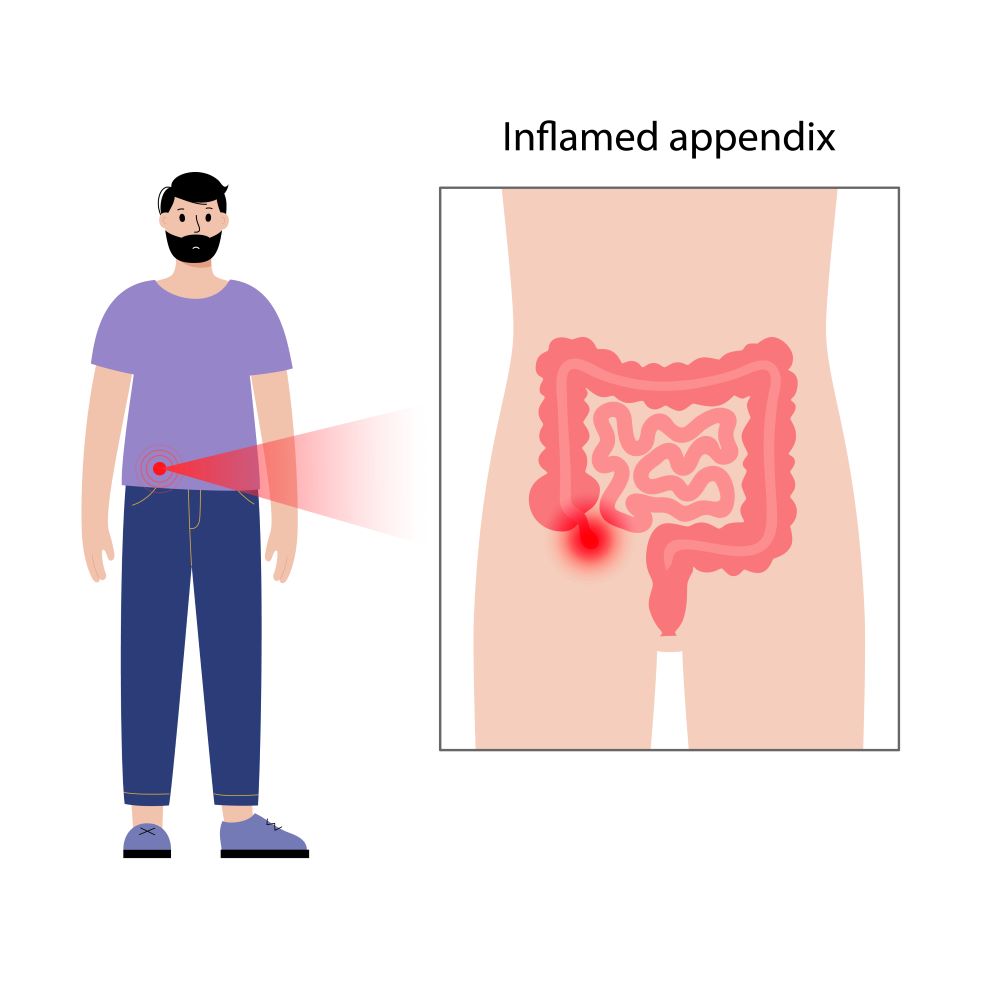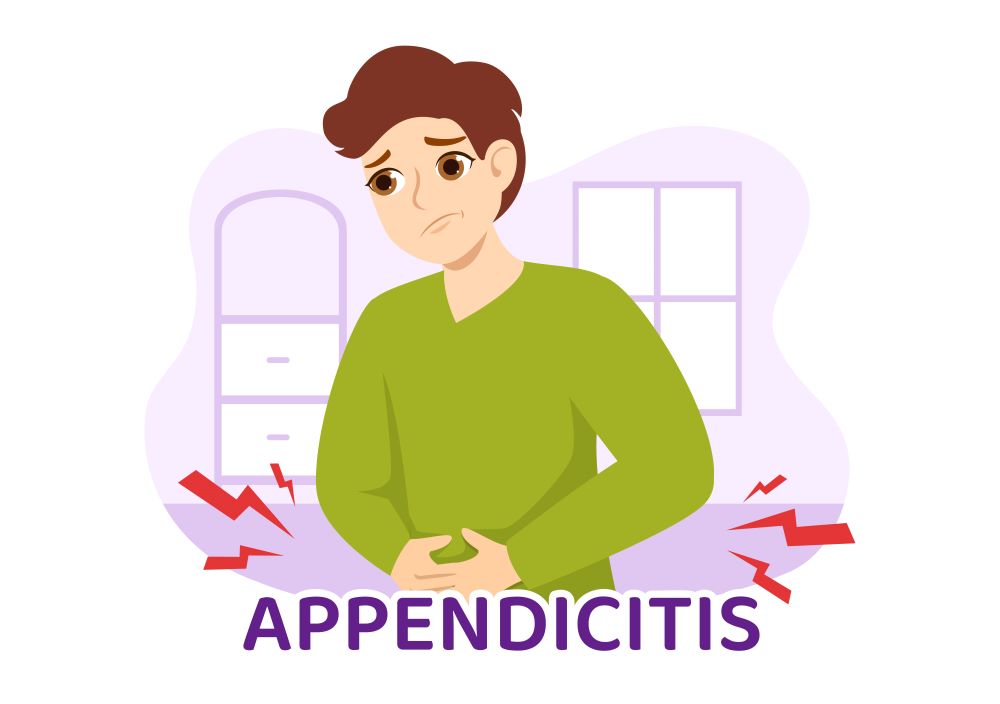1.What is appendicitis?
Appendicitis is appendix inflammation, a small pouch attached to the large intestine. It is a medical emergency.
2. Which age group is more likely to develop appendicitis?
Appendicitis happens a little more often in men than in women. Teenagers and people in their 20’s are more likely to have it, but anyone of any age, even older adults, can have it.
3. What causes appendicitis?
Appendicitis can be brought on by an illness in the appendix or a blockage in it. Though no one knows for sure, this is thought to be caused by food or poop getting stuck in the appendix. This blocks the appendix, which then gets red and swollen.
4. What are the common symptoms of appendicitis?
The symptoms include:
- Sudden pain on the lower right side of the abdomen
- Nausea and vomiting
- Loss of appetite
- Fever
- Swelling in the abdomen
- Constipation or diarrhoea
If you experience these symptoms, consult a doctor immediately.
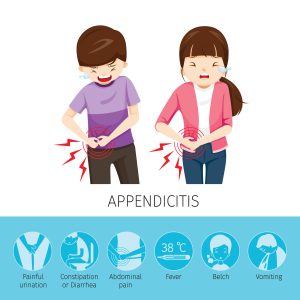
5. Who is at risk for appendicitis?
Appendicitis can occur in anyone, but it is most common in:
- People aged 10–30
- Individuals with a family history of appendicitis.
- Those with a diet low in fiber and high in processed foods.
6. How is appendicitis diagnosed?
Doctors use the following methods to diagnose appendicitis:
- Physical examination focusing on tenderness in the lower right abdomen.
- Blood tests to check for infection.
- Imaging tests such as ultrasound, CT scan, or MRI to confirm inflammation or rupture.
7. Is appendicitis always an emergency?
Yes, appendicitis is considered a medical emergency. If left untreated, the appendix can rupture, spilling infectious materials into the abdomen and leading to a life-threatening condition called peritonitis.
8. How is appendicitis treated?
The primary treatment for appendicitis is surgery to remove the appendix (appendectomy). This can be done through:
- Laparoscopic surgery: A minimally invasive technique.
- Open surgery: Used in more complicated cases or if the appendix has already ruptured. In some cases, antibiotics may be used to control infection before surgery.
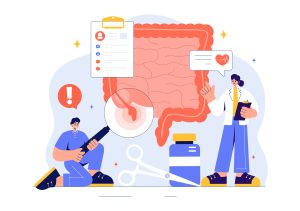
9. Can appendicitis resolve without surgery?
In rare cases, mild appendicitis may resolve with antibiotics. However, most patients will eventually require surgery to prevent complications.
10. What are the complications of untreated appendicitis?
Complications include:
- Ruptured appendix
- Peritonitis (infection in the abdominal cavity)
- Abscess formation
- Sepsis (a life-threatening systemic infection)
11. How long does it take to recover from an appendectomy?
Recovery depends on the type of surgery:
- Laparoscopic surgery: 1–3 weeks.
- Open surgery: 2–4 weeks. Following a doctor’s instructions on rest and wound care is crucial for recovery.
12. Can you live without an appendix?
Yes, the appendix is not essential for survival. It has no significant role in the body, and its removal does not affect digestion or overall health.
13. Can appendicitis be prevented?
While there’s no guaranteed way to prevent appendicitis, a high-fiber diet with plenty of fruits, vegetables, and whole grains may reduce the risk by preventing blockages in the appendix.
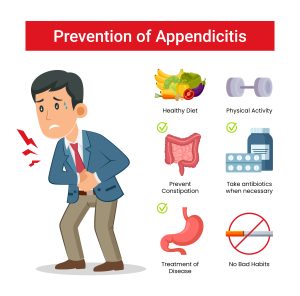
14. Is appendicitis common in children?
Yes, appendicitis is relatively common in children, especially those aged 10–19. Diagnosing appendicitis in young children can be challenging because they may have difficulty explaining their symptoms.
15. What foods should be avoided after an appendectomy?
After surgery, avoid:
- Spicy and greasy foods
- Processed and junk foods
- High-fiber foods (temporarily, as they can irritate the digestive tract). Stick to a light, easily digestible diet as advised by your doctor.
16. When should I see a doctor for abdominal pain?
You should seek immediate medical attention if you experience:
- Severe abdominal pain, especially in the lower right side.
- Pain that worsens with movement or coughing.
- Fever, nausea, or vomiting accompanying the pain.
- Swelling or tenderness in the abdomen. Quick intervention can prevent complications and ensure better outcomes.
